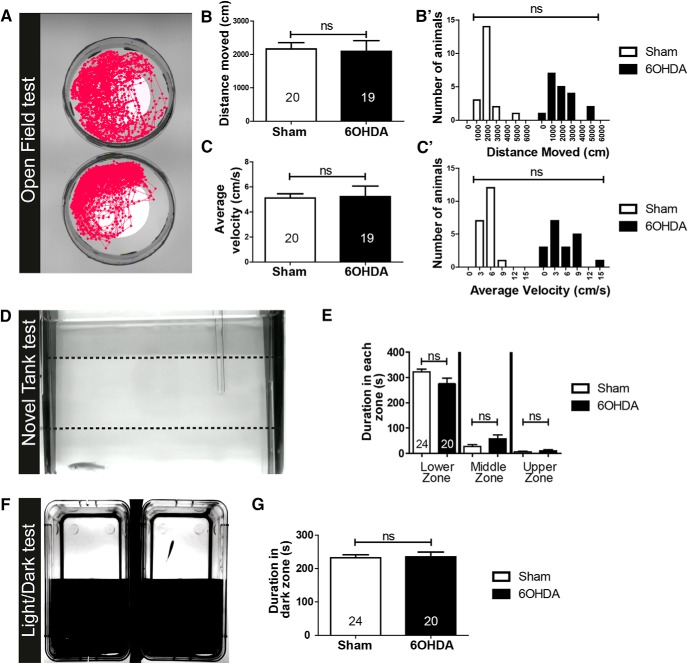Figure 13.
Basic swimming parameters and anxiety-like behaviors are unaltered by 6-OHDA treatment. A, Typical swim tracks are shown. B–C′, Quantifications of averages (B, C) and frequency distributions (B′, C′) of distance swum (B) and average velocity (C) show no differences between control and treated fish. B, C, Student's t test, p > 0.05. B′, C′, Kolmogorov–Smirnov test, p > 0.05. D, A side view of a fish preferring the lower third of a novel tank is shown. E, Quantifications of time spent in the different depth of the tank show the same preference for the lowest compartment in control and 6-OHDA-treated fish. Mann–Whitney U tests, p > 0.05. F, The setup for the light/dark preference test is shown from above. G, Quantifications indicate that control and treated fish do not differ in their preference for the dark compartment in a 300 s observation period. Student's t test, p > 0.05. Error bars represent S.E.M.

